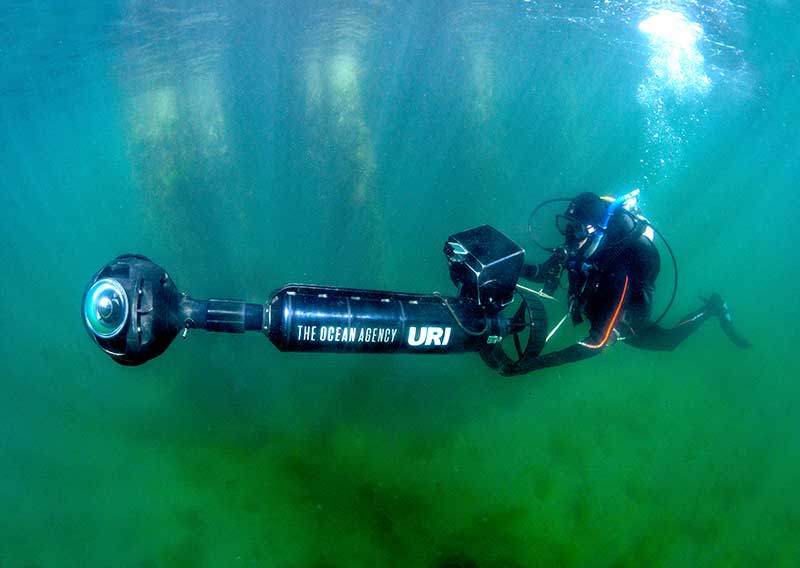URI is partnering with the Ocean Agency to make waves in the world of underwater technology. PHOTO CREDIT: plastics.uri.edu
For many, what is happening below the ocean surface may never be known.
Creating new techniques and ways to capture the audience to teach them about the marine environment is important in helping us preserve this resource for years to come.
“People are interested in technology, and developing technology that really maximizes opportunity is critical,” said Richard Vevers, CEO of the Ocean Agency, a non-profit organization geared towards raising awareness for effective ocean protection.
Creating these techniques is a long-term goal of Vevers. The University of Rhode Island teamed up with the Ocean Agency to investigate new habitats and bring public awareness to the sea.
Inspired by 360-degree cameras utilized by Google Street view, the Ocean Agency developed the Hammerhead Camera, a similar camera designed to be used in an underwater environment, according to Vevers.
The prototype camera was utilized in The Catlin Seaview Survey, the most comprehensive underwater photographic survey that captured over one million images and allowed them to be analyzed. This prototype camera has captured photos of many unique ocean environments, but it was not originally designed for scientific research.
However, the Ocean Agency recognized the research potential of the Hammerhead Camera for monitoring environments including coral reefs to see how they change over time.
Often sites cannot be surveyed multiple times because of numerous external factors (including weather, tides and visibility), but having a camera that can capture images will allow for more comprehensive and tangible visualizations of these sites for a potentially unlimited amount of time.
“This camera permits us to get stereo imagery that can be reconstructed on a [three-dimensional] model of the place that was surveyed,” said Vevers.
While working alongside URI, the Ocean Agency is fleshing out issues that have been found in previous models of the Hammerhead Camera. Vevers said that two versions of the camera have existed so far: Seaview 1 and Seaview 2. Seaview 1 was a massive camera that weighed over 80 kilograms. When it came time to re-thinking and re-designing the device, size was a primary consideration due to difficulties with transportation.
In future prototypes the goal is to synthesize three-dimensional and four-dimensional models to allow monitoring of fish populations. To date, no scientist has combined the two in an attempt to monitor the full scope and scale of being at that location.
Vevers hopes to achieve two central objectives with the current model of the camera. The first involves demonstrating how reef restoration is accountable and captures how fast the corals are growing, while also showing that fish populations are returning to these reefs.
The second purpose of this camera is to bring awareness to the public about diverse underwater environments. Currently, there is an international push for coral reef monitoring as a key method to measure and incentivize action to save coral reefs.
Coral reef ecosystems are the most endangered ecosystems due to climate change. According to the Ocean Agency website, “advances in science and monitoring technology are allowing researchers to make strides toward reef conservation.”
Vevers made a point towards getting more media attention around the issue as well as finding solutions to problems that are currently underdeveloped.
Protecting the ocean and conserving this resource is crucial. Vevers said that people have a growing interest in technology and believes that right now is a pivotal time for coral reefs and ecosystems – this camera and upcoming technology will allow us to share the imagery that it collects.
Engaging people with the story of what is unfolding in our environment, while covering the work that is being done to protect and restore ecosystems, is one of the primary means by which we can highlight the urgency of this project.
To learn more about the Ocean Agency and the work they are doing visit their website at: https://www.theoceanagency.org





